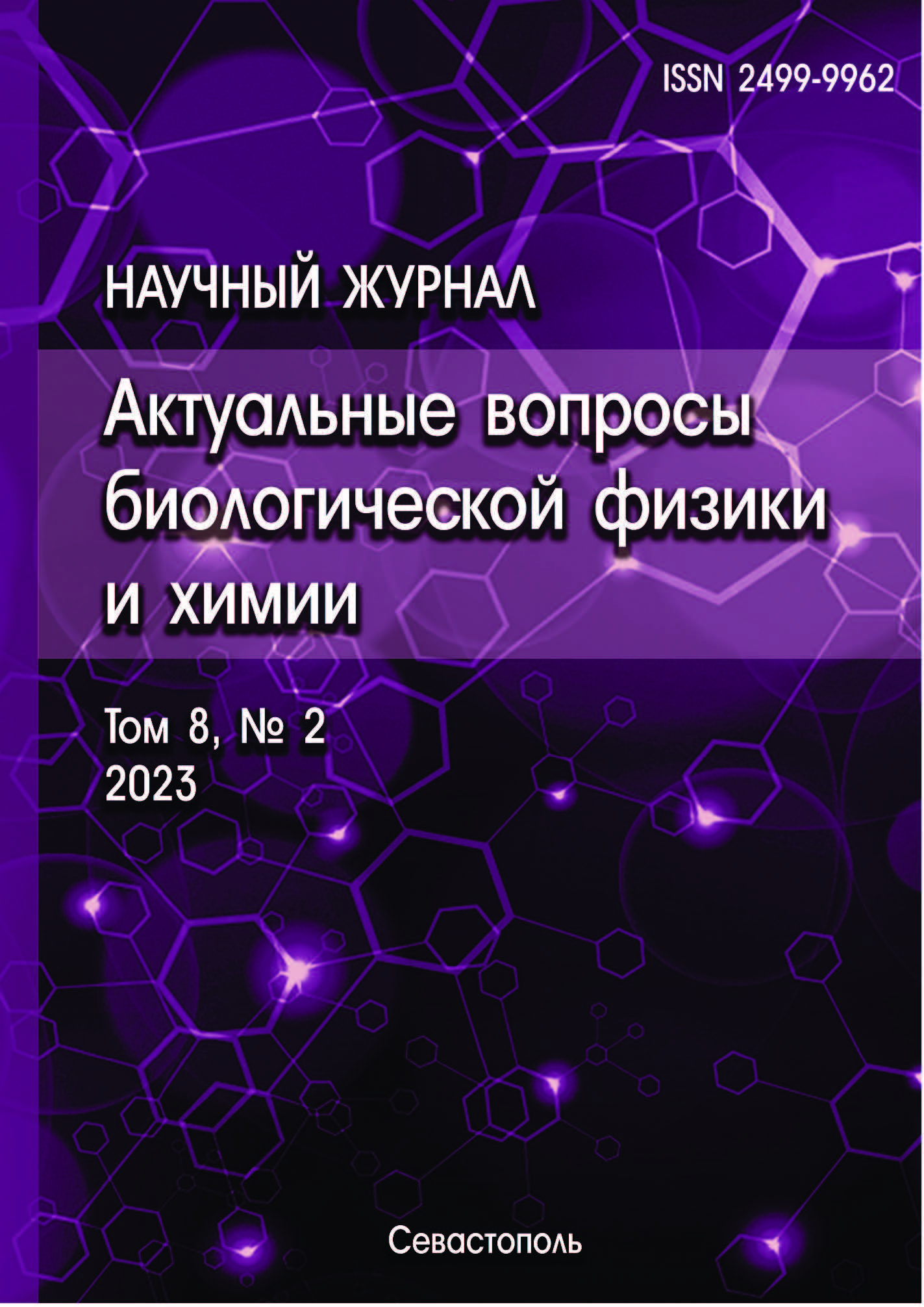Novosibirsk, Novosibirsk, Russian Federation
Novosibirsk, Novosibirsk, Russian Federation
The article explores the possibility of measuring glycated hemoglobin in single erythrocytes using scanning flow cytometry. Calculations of the intensity of scattered radiation from an erythrocyte in a wide angular range (light scattering indicatrix) were carried out for wavelengths at the maximum of the absorption band of glycated hemoglobin. The maximum sensitivity for the concentration of glycated hemoglobin was set at a wavelength of 415 nm. As a result, it is possible to reliably separate the concentrations of glycated hemoglobin in donors and patients with diagnosed diabetes with a difference in HbA1c concentrations of more than 5% on the existing practical implementation of a scanning flow cytometer, which includes lasers: 405 nm (30 mW, Radius, Coherent Inc., Santa Clara, USA) and 660 nm (LM–660–20–S, 40 mW). A theoretical calculation for a wavelength of 415 nm showed that a noticeable difference in the value of the scattering intensity (more than 10%) is observed only in the case of a difference in the concentrations of glycated hemoglobin of at least 3%. Thus, if a laser with a wavelength of 415 nm is installed on the existing practical implementation of the device, then the determination of glycated hemoglobin will become possible with an accuracy of no more than 3%.
erythrocytes, hemoglobin, glycated hemoglobin, scanning flow cytometry
1. Lipunova E.A., Skorkina M.U. The Red Blood System: Comparative Physiology. Monograph. Belgorod: Publishing House of BelSU, 2004, 216 p. (In Russ.).
2. Emmanuel V.L., Karyagina I.U., Emmanuel U.V. Comparison of methods for determining glycosylated hemoglobin. Laboratory medicine, 2002, vol. 5, pp. 99-104 (In Russ.).
3. Kaplan L.A., Pesce A.J. Clinical Chemistry. 2nd edition. St. Louis: CRC Press, 1989, 63 p.
4. Bodor G.S. et al. Standardization of glycohemoglobin determinations in the clinical laboratory: three years of experience. Clin. Chem., 1992, vol. 38, no. 12, pp. 2414-2418.
5. Sridevi S. et al. Optical detection of glucose and glycated hemoglobin using etched fiber Bragg gratings coated with functionalized reduced graphene oxide. J. Biophotonics, 2016, vol. 9, no. 7, pp. 760-769. DOI: https://doi.org/10.1002/jbio.201580156; EDN: https://elibrary.ru/XZFINF
6. Mandal S., Manasreh M.O. An In-Vitro Optical Sensor Designed to Estimate Glycated Hemoglobin Levels. Sensors, 2018, vol. 18, no. 4.
7. Park Y. et al. Spectroscopic phase microscopy for quantifying hemoglobin concentrations in intact red blood cells. Opt. Lett., 2009, vol. 34, no. 23, p. 3668.
8. Strokotov D.I. et al. Polarized light-scattering profile-advanced characterization of nonspherical particles with scanning flow cytometry: Polarized Light Scattering.Cytometry A, 2011, vol. 79A, no. 7, pp. 570-579. DOI: https://doi.org/10.1002/cyto.a.21074; EDN: https://elibrary.ru/OHROTN
9. Boren K.F., Huffman D.R. Absorption and scattering of light by small particles. Moscow: Mir, 1986, 660 p. (In Russ.).
10. Yastrebova E.S. et al. Erythrocyte lysis and angle-resolved light scattering measured by scanning flow cytometry result to 48 indices quantifying a gas exchange function of the human organism. Cytom. Part J. Int. Soc. Anal. Cytol., 2023, vol. 103, no. 1, pp. 39-53. DOI: https://doi.org/10.1002/cyto.a.24554; EDN: https://elibrary.ru/QXGMHD
11. Cohen R.M. et al. Red cell life span heterogeneity in hematologically normal people is sufficient to alter HbA1c. Blood, 2008, vol. 112, no. 10, pp. 4284-4291.










